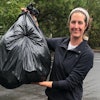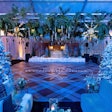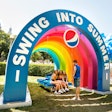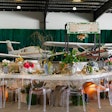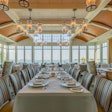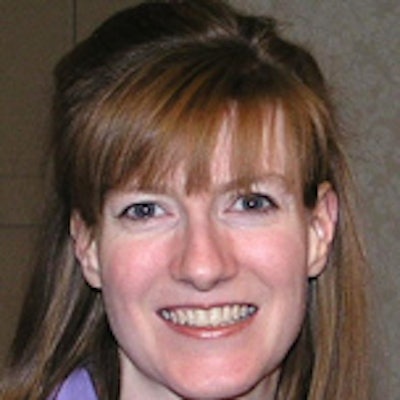
Lisa McDonald, convention director of the Prospectors and Developers Association of Canada (PDAC), began her career with the association nine years ago. She now coordinates the group?s annual convention, which attracts 12,000 attendees and opens with a reception for 2,000. Other functions during the four-day event include an awards dinner for 700, a theme night for 1,500, a president's V.I.P. party for 150, and a closing-night party for 500. McDonald organizes the event with the support of two employees, and a large group of volunteers.
What's it like working on PDAC's annual convention?
It's a lot of hard work, especially since it takes a full year to put together. But it is very rewarding. It's nice to be able to see the progression of the convention every year. That's the best part of being somewhere for a really long time.
What has been your biggest challenge in nine years with the PDAC?
Actually, the biggest challenge came this year. The final night of the convention was a dinner party for 500 with a South Pacific theme. The entrance decor was very lavish—it included a tiki hut with grass skirting, lots of brightly coloured faux tropical flowers, and garlands of greenery, palm trees, and more. Thirty minutes before the cocktail reception started, a large commotion erupted in the hallway. Fifty masked protesters, demonstrating against one of the evening's sponsors, stormed the entrance of the party. They were protesting the defence unit of an engineering and construction company that supplies ammunition to the U.S. defense department. The incident turned very physical; a large portion of the decor was destroyed, and several staff and sponsors were assaulted. We managed to stop the protesters from getting into the main room with the help of the hotel and event staff. They were finally removed from the building when the riot squad showed up. The event staff and the sponsor's staff got together to clean up the mess and salvage what was left of the decor. In the end, the evening was a success and the attendees were not aware that anything had taken place. I think the biggest shock of the incident was that we had no warning from our sponsor that any trouble was to be expected.
What advice would you offer to planners based on that experience?
Research your clients, know whom you're working for, and be educated about the event.
What is the most difficult part of your job?
The most difficult thing is working with volunteer committees. In the nonprofit sector, you have to report to a board, which has input into what you do. Working with volunteers who are not professionals in the event industry can be very challenging. Their roles and lines of responsibility need to be very clearly defined, and they require constant supervision. Another difficult part of my job is keeping the convention fresh, especially since we have been in the same location every year for 74 years.
What is the most important aspect of the convention?
This year, the PDAC commissioned a survey prior to the convention to find out why attendees keep returning. The responses were unanimous: Attendees all agreed that they come for the networking opportunities and business contacts. So we knew we had to incorporate networking opportunities everywhere we possibly could. Since the convention is broken down into a series of different functions, we made sure to keep the networking and social-contact aspects of the events in the forefront of our planning.
What is your biggest event fear?
That nobody shows up!
Where do you go for ideas?
I go to the Internet. I also get a lot from feedback from attendees, from networking, and from talking to others in the industry. In addition, I read magazines to catch up on trends. Luckily, I have a fabulous teammate in Deborah Breckels, who comes up with the creative for the event each year.
—Robyn Small
Posted 06.16.05
What's it like working on PDAC's annual convention?
It's a lot of hard work, especially since it takes a full year to put together. But it is very rewarding. It's nice to be able to see the progression of the convention every year. That's the best part of being somewhere for a really long time.
What has been your biggest challenge in nine years with the PDAC?
Actually, the biggest challenge came this year. The final night of the convention was a dinner party for 500 with a South Pacific theme. The entrance decor was very lavish—it included a tiki hut with grass skirting, lots of brightly coloured faux tropical flowers, and garlands of greenery, palm trees, and more. Thirty minutes before the cocktail reception started, a large commotion erupted in the hallway. Fifty masked protesters, demonstrating against one of the evening's sponsors, stormed the entrance of the party. They were protesting the defence unit of an engineering and construction company that supplies ammunition to the U.S. defense department. The incident turned very physical; a large portion of the decor was destroyed, and several staff and sponsors were assaulted. We managed to stop the protesters from getting into the main room with the help of the hotel and event staff. They were finally removed from the building when the riot squad showed up. The event staff and the sponsor's staff got together to clean up the mess and salvage what was left of the decor. In the end, the evening was a success and the attendees were not aware that anything had taken place. I think the biggest shock of the incident was that we had no warning from our sponsor that any trouble was to be expected.
What advice would you offer to planners based on that experience?
Research your clients, know whom you're working for, and be educated about the event.
What is the most difficult part of your job?
The most difficult thing is working with volunteer committees. In the nonprofit sector, you have to report to a board, which has input into what you do. Working with volunteers who are not professionals in the event industry can be very challenging. Their roles and lines of responsibility need to be very clearly defined, and they require constant supervision. Another difficult part of my job is keeping the convention fresh, especially since we have been in the same location every year for 74 years.
What is the most important aspect of the convention?
This year, the PDAC commissioned a survey prior to the convention to find out why attendees keep returning. The responses were unanimous: Attendees all agreed that they come for the networking opportunities and business contacts. So we knew we had to incorporate networking opportunities everywhere we possibly could. Since the convention is broken down into a series of different functions, we made sure to keep the networking and social-contact aspects of the events in the forefront of our planning.
What is your biggest event fear?
That nobody shows up!
Where do you go for ideas?
I go to the Internet. I also get a lot from feedback from attendees, from networking, and from talking to others in the industry. In addition, I read magazines to catch up on trends. Luckily, I have a fabulous teammate in Deborah Breckels, who comes up with the creative for the event each year.
—Robyn Small
Posted 06.16.05



